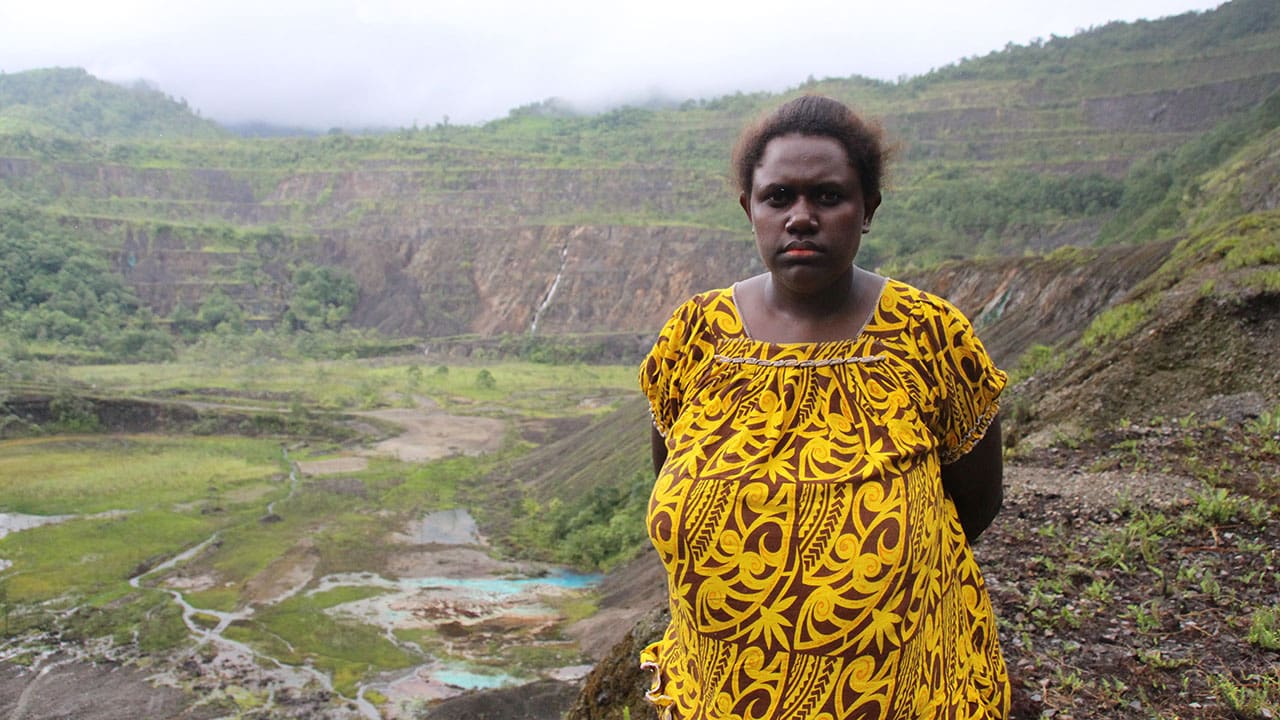After the mine: Living with Rio Tinto’s deadly legacy
Our major report, After the mine: Living with Rio Tinto’s deadly legacy, documents the human impact of Rio Tinto’s deadly actions in Bougainville.
In September 2019 and February 2020, the Human Rights Law Centre visited 38 sites and met with communities impacted by mine waste abandoned by Rio Tinto. The local people are living with serious health problems such as skin diseases, respiratory problems and pregnancy complications arising from contaminated water sources and land and crops flooded by toxic mud.
Panguna was previously one of the world’s largest copper and gold mines. The mine generated almost $US 2 billion in revenue for Rio Tinto and the Papua New Guinea Government until 1989, when an uprising by local people against the environmental destruction caused by the mine, and inequities in the distribution of its profits, forced the mine’s closure and triggered a brutal decade-long civil war..
A clear path had been identified to deal with the environmental devastation at Panguna, but in 2014, Rio Tinto divested from the mine before this could be implemented, completely avoiding the cost of the clean-up.
The impacts of the mine are severely infringing communities’ fundamental rights to food, water, health and housing.
Our report calls on Rio Tinto, and its former subsidiary Bougainville Copper Limited, to immediately commit to funding an independent assessment of the mine to identify the most urgent health and safety risks to communities and establish a substantial fund to address these problems and assist with long-term rehabilitation.






